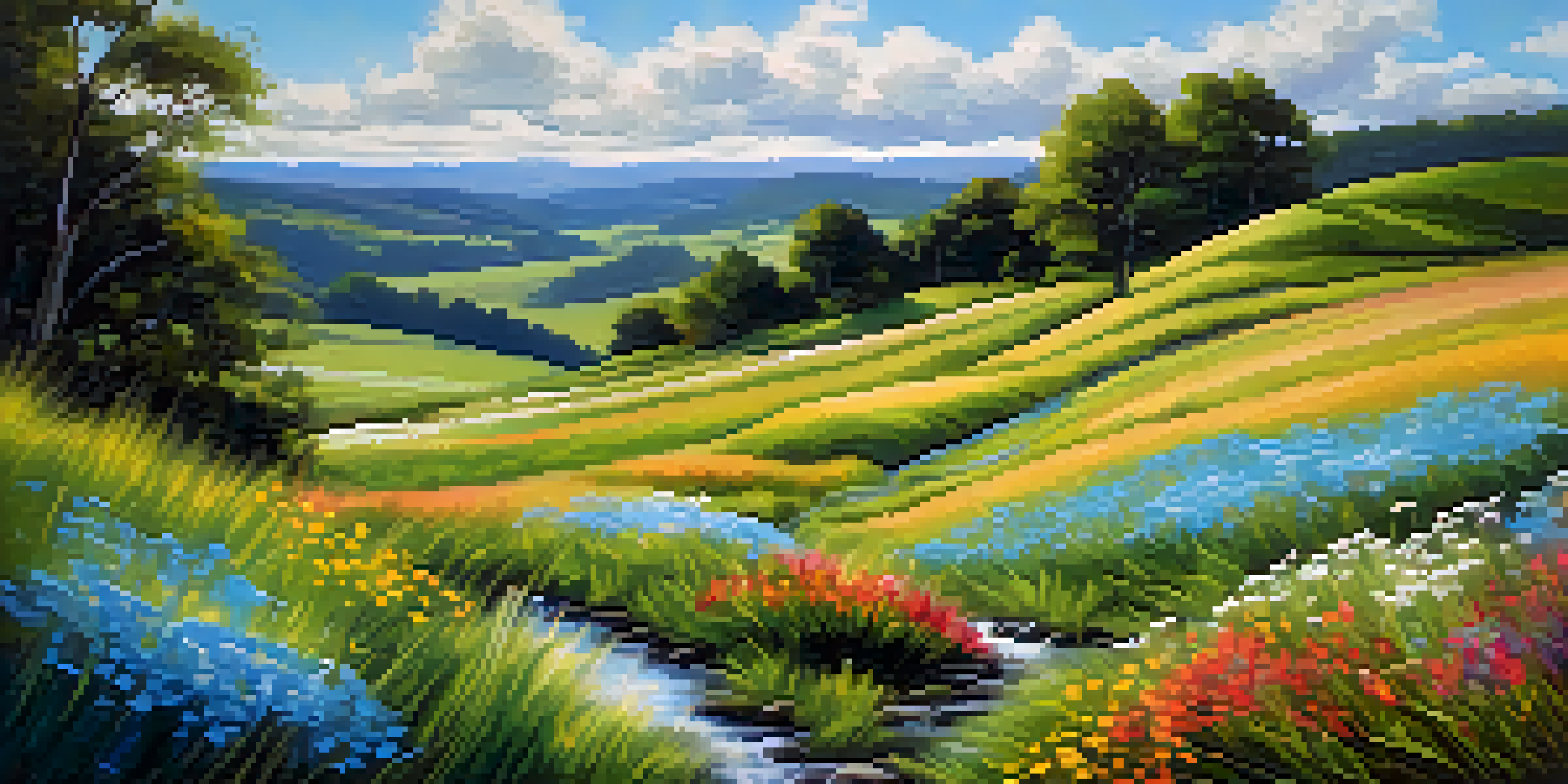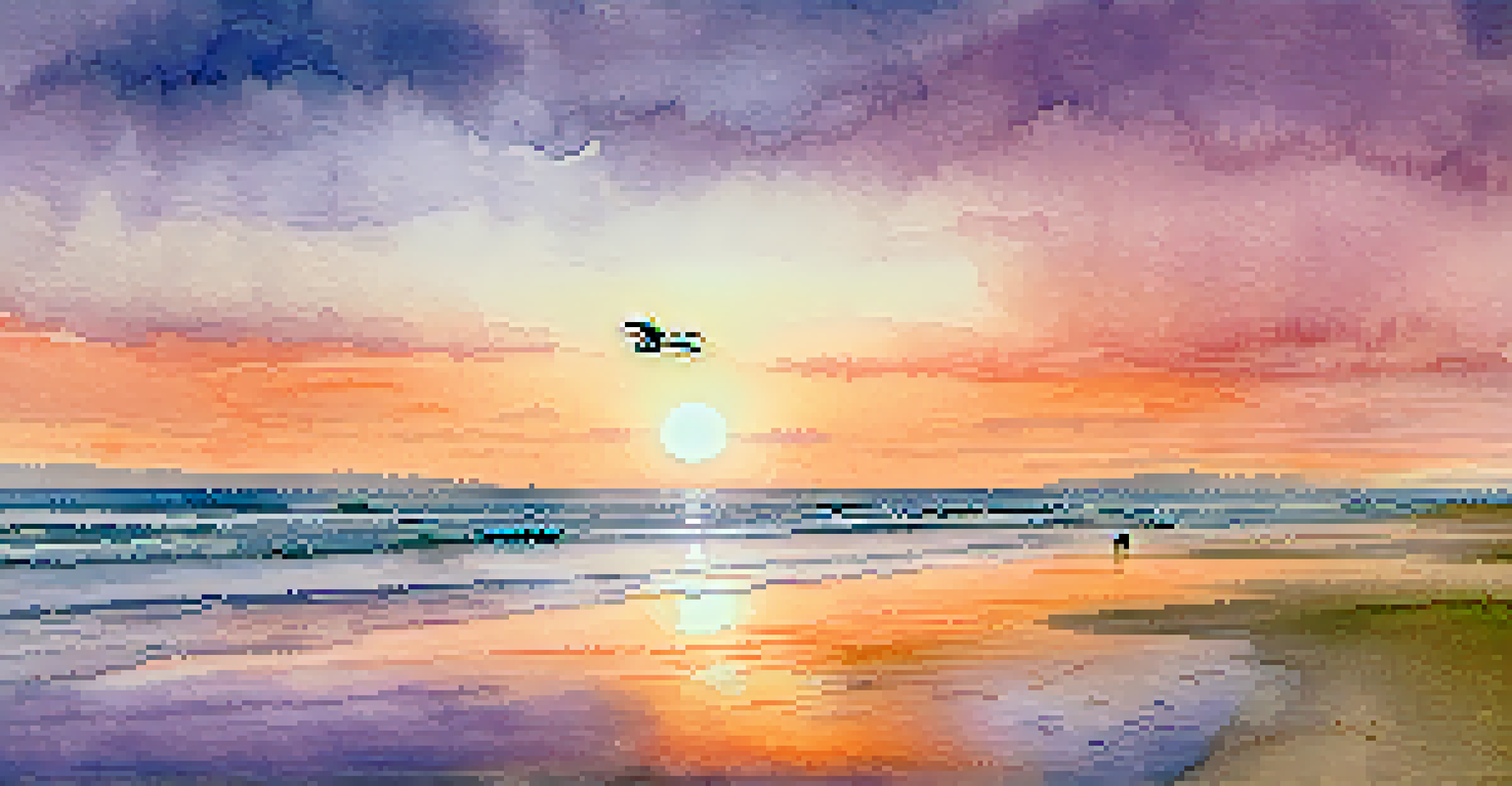Types of Paint: Understanding Acrylic, Oil, and Watercolors

What Are Acrylic Paints and Their Benefits?
Acrylic paints are water-based and known for their versatility. They dry quickly, which allows artists to layer colors without long waiting times. This property makes them a favorite for both beginners and seasoned painters who enjoy a fast-paced workflow.
Every artist was first an amateur.
Another appealing feature of acrylics is their ability to mimic other paint types. With the right techniques, you can achieve effects similar to oils or watercolors, making them a great choice for artists wanting to experiment. Plus, they are non-toxic, which adds to their safety, especially for younger artists.
Their vibrant colors and ease of clean-up only add to their charm. Being water-soluble, you can easily wash brushes and palettes with soap and water. This convenience makes acrylics an ideal medium for artists who want to create without the fuss.
Exploring Oil Paints: Richness and Depth
Oil paints have been used for centuries and are beloved for their rich pigments and depth. They allow for a beautiful blending of colors, making it easy to create stunning gradients and subtle transitions. This quality gives oil paintings a unique luminosity that stands out in any gallery.

One of the defining traits of oil paints is their slow drying time. While this might sound inconvenient, it actually gives artists more time to work on their pieces. You can take breaks and revisit your work without worrying about the paint drying too quickly, which is particularly beneficial for detailed projects.
Acrylics: Versatile and Fast-Drying
Acrylic paints are water-based, quick-drying, and ideal for artists who enjoy layering colors without long waits.
However, oil paints do require some specific techniques and materials. You'll need to use solvents like turpentine or mineral spirits for thinning and cleaning, which can be a bit daunting for newcomers. But once you get the hang of it, the results can be truly breathtaking.
The Delicate Nature of Watercolor Paints
Watercolors offer a completely different painting experience compared to acrylics and oils. They are known for their transparency and fluidity, allowing artists to create soft, ethereal landscapes and delicate details. The way watercolors blend on paper can create stunning effects that are difficult to achieve with other mediums.
Art is not freedom from discipline, but disciplined freedom.
One key aspect of watercolor painting is the importance of water control. The more water you add, the lighter and more transparent the color becomes, which can lead to beautiful washes and gradients. This characteristic encourages a thoughtful approach to painting, where each brushstroke can significantly alter the final outcome.
While watercolors may seem less forgiving due to their quick drying time and transparency, they offer a unique charm that many artists appreciate. With practice, you can learn to layer colors effectively and create depth, resulting in striking works of art that showcase your skill and creativity.
Comparing the Three Types of Paint
When it comes to choosing between acrylic, oil, and watercolor paints, it's essential to consider your personal style and goals. Acrylics are great for quick projects and experimentation, while oils are perfect for those who enjoy detailed, layered work that takes time. Watercolors shine in their ability to create soft, flowing images.
Each medium has its own unique set of characteristics that can influence your artistic process. For instance, if you love vibrant colors and fast-drying paints, acrylics may be your best bet. On the other hand, if you prefer working slowly and enjoy rich textures, oils might be the way to go.
Oils: Rich Colors and Blending
Oil paints offer deep pigments and a slow drying time, allowing for intricate blending and detailed work.
Ultimately, many artists find joy in exploring multiple mediums. Trying out all three types of paint can expand your skills and help you discover what resonates best with your creative vision.
Essential Tools for Acrylic Painting
To get started with acrylic painting, you'll need a few essential tools. First, high-quality brushes designed for acrylics are crucial, as they can withstand the thicker consistency of the paint. A variety of shapes and sizes will allow for different techniques, from broad strokes to fine details.
Next, consider your choice of canvas or paper. Acrylics can be painted on various surfaces, but primed canvases or acrylic paper will yield the best results. Additionally, a palette for mixing colors and a water container for rinsing brushes are indispensable for a smooth painting session.
Lastly, don't forget about mediums and additives! Acrylic mediums can enhance your paint's texture or drying time, allowing for even more creative expression. Experimenting with these tools can help you find your unique style as you explore this vibrant medium.
Key Supplies for Oil Painting
When diving into oil painting, the right supplies can make all the difference. Start with a set of quality oil paints that feature a range of colors. Investing in a good set allows for vibrant mixes and ensures your paintings will have the depth and richness that oils are renowned for.
You'll also need brushes designed specifically for oil paints, as they are typically sturdier than those for acrylics and watercolors. A palette for mixing colors and a palette knife for creating texture are essential tools that enhance your painting experience.
Watercolors: Transparency and Flow
Watercolors provide a unique painting experience characterized by their transparency and the need for careful water control.
Don't forget the solvents and mediums! Turpentine or odorless mineral spirits are necessary for thinning oil paints and cleaning brushes. Using oil mediums can also modify the paint's drying time, allowing you to achieve various effects and techniques.
Beginner's Guide to Watercolor Supplies
For those interested in watercolor painting, beginning with the right supplies is vital. A good set of watercolor paints, whether in tubes or pans, will provide the foundation for your artistic journey. Choose a set that includes a variety of colors to explore different palettes and effects.
You'll also need watercolor brushes, which are typically made with soft bristles to hold water and pigment effectively. A quality pad of watercolor paper is essential, as it can handle the amount of water used without warping or tearing.

Lastly, consider investing in additional tools like masking fluid or sponge brushes for special effects. These supplies can help you experiment and create beautiful artworks that showcase the unique qualities of watercolors.